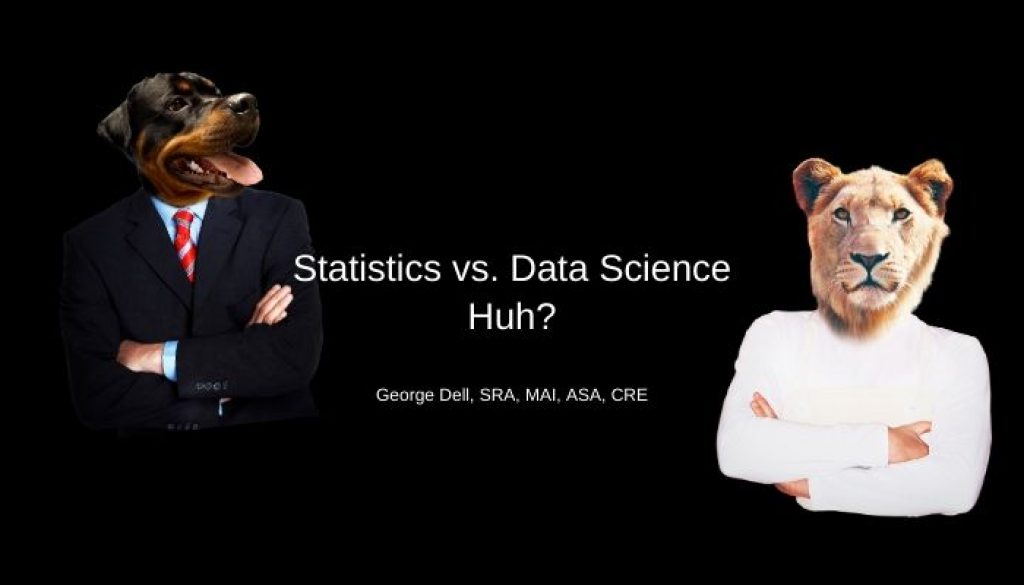Statistics can seem difficult and esoteric. Data Science is new. Each can be scary.
We see traditional statistics as required material for the appraiser license. Basic inferential statistics have also been curriculum touted as “advanced” analytics for appraisers. Multiple regression, often thought of as a statistical method, is really a mathematical algorithm, which depends on the underlying economic/valuation model. Both are grossly misused. Descriptive statistics are actually not ‘statistics’ at all. They are just math formulas/algorithms, used to describe or summarize (mean, median, variation). (Such as cap rates or building sizes or prices in a neighborhood.)
Data science is a relatively new discipline, even as over 100 universities offer advanced degrees in the topic. Their quality and relevance vary greatly.
UNDERLYING ASSUMPTIONS: STATISTICS
“Statistics” was born in olden times of abacus, pencil/paper, adding machine, and spreadsheet (to organize lots of numbers). The problem was always the cost, the difficulty or impossibility of getting all the data. The solution was to sample a small portion of the whole (the population). The statistics profession mostly developed around how to get a good sample. At first, judgment was used to get samples. Then math methods became available to get samples.
It was discovered that the best sample was one gathered randomly. If you can’t collect the whole data set, you get a part in a random fashion. Inferential statistics is all about how well does your random sample represent the population. It says little or nothing about how good is the model you selected. (Like selecting one of the “three approaches to value”.)
“Statistics” was/is a discipline detached from any particular use.
Appraisal depended on the appraiser’s ease and good judgment to select data (pick comps). Complete data sets were not available. Random sampling never was a part of appraisal practice. Instead — good judgment and declared ethics were the core of the value expert’s product. Judgment.
UNDERLYING ASSUMPTIONS: DATA SCIENCE
Data Science relies on three technologies:
- Complete (or substantially complete) data available electronically;
- Computer power able to perform algorithms quickly and accurately;
- Brain-machine communication via visualization – plots and graphs.
Data science explicitly recognizes the need for an SME (subject matter expert). The SME is competent in judgment about models, and applying the right algorithm at the right time. Data science does not provide a personal opinion. It provides a result. The result is documented from beginning to end. It is reproducible. It is auditable.
Correct and relevant graphs are a critical part of appraisal modernization. Past efforts have failed, such as the infamous “common sense” 1004MC form, which grouped time-series data into bar-charts, instead of scatterplots. The result was wrong results, of wrong data, using the wrong graph, answering the wrong question.
RECOMMENDATIONS
It is my hope that we can avoid fundamental mistakes of visualization science in the future. Users and clients of valuation/risk assessment services may take the lead. Better yet, our professional organizations can resolve to take the lead.
Valuemetrics.info courses encourage and train appraisers to move to become Asset Analysts©. I am currently co-authoring a book designed for users, reviewers, regulators, and auditors.
Appraisal modernization requires a combination of education and enlightened consumers for a superior product. Join us on either the demand or supply side of valuation/risk/equity assessment.

January 22, 2020 @ 4:03 pm
Data science perfectly described: 1) complete dataset, 2) mathematical algorithms and 3) visualization. Kudos for synthesizing this down into its essential elements.